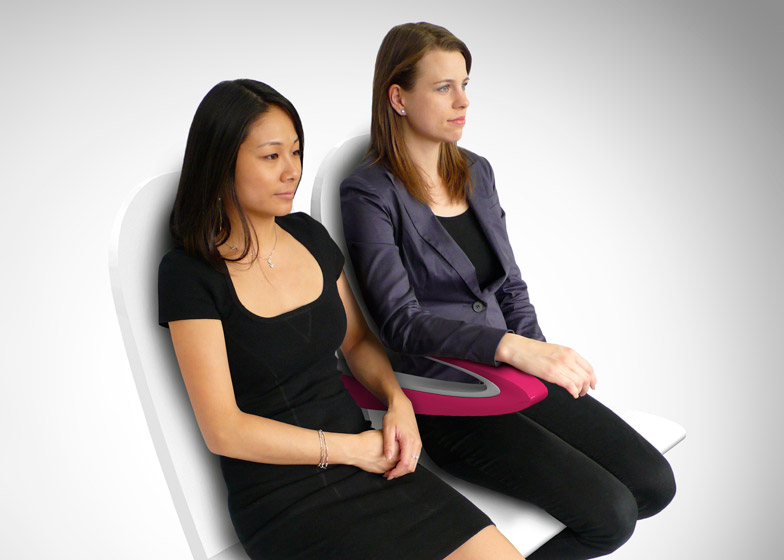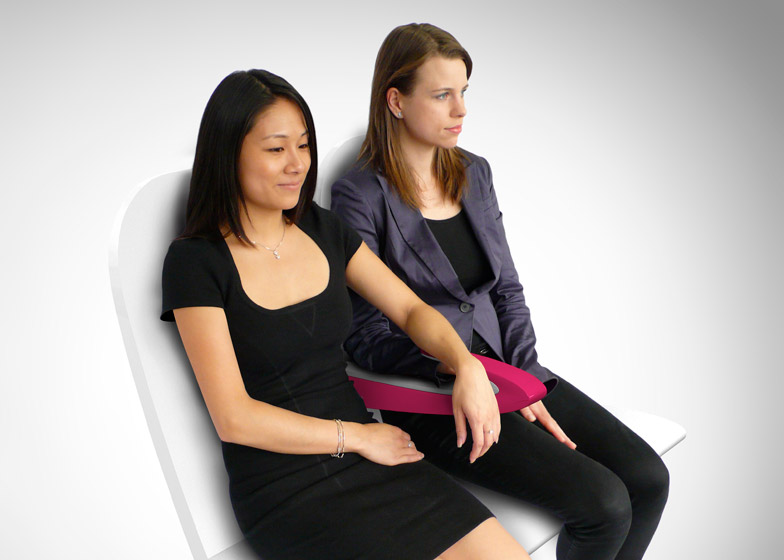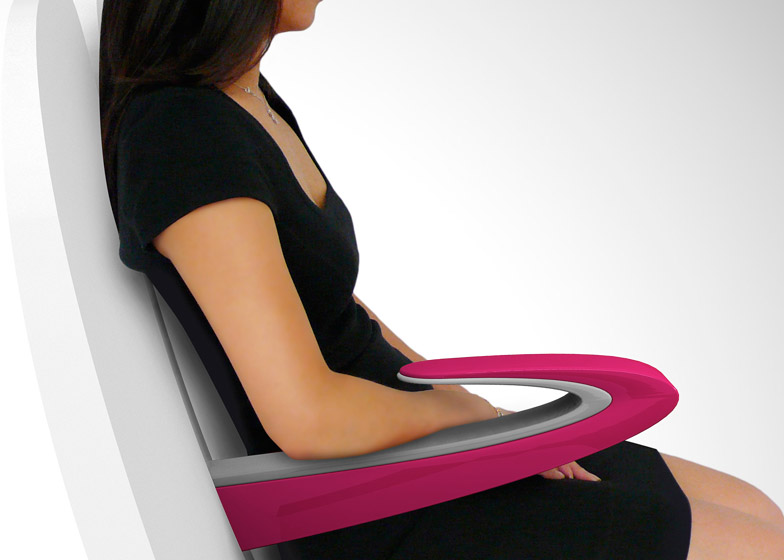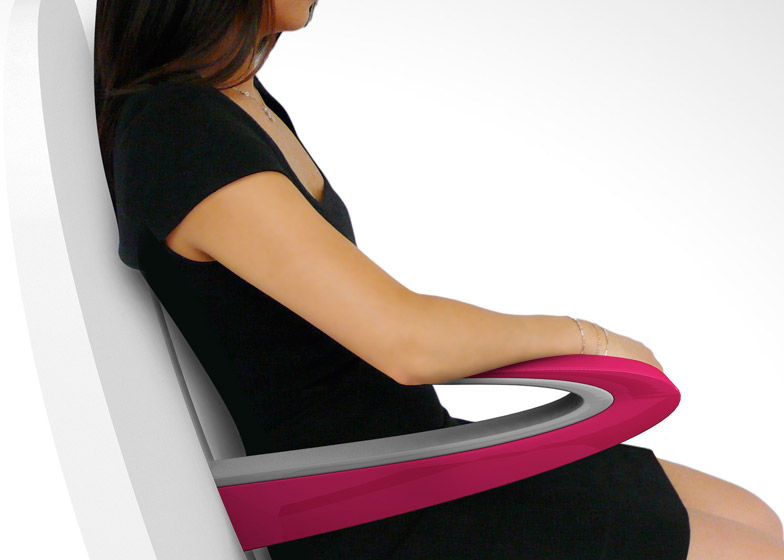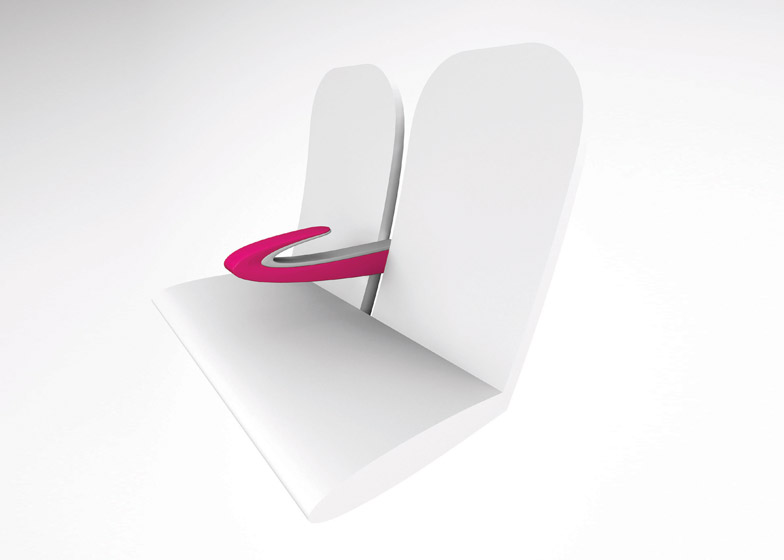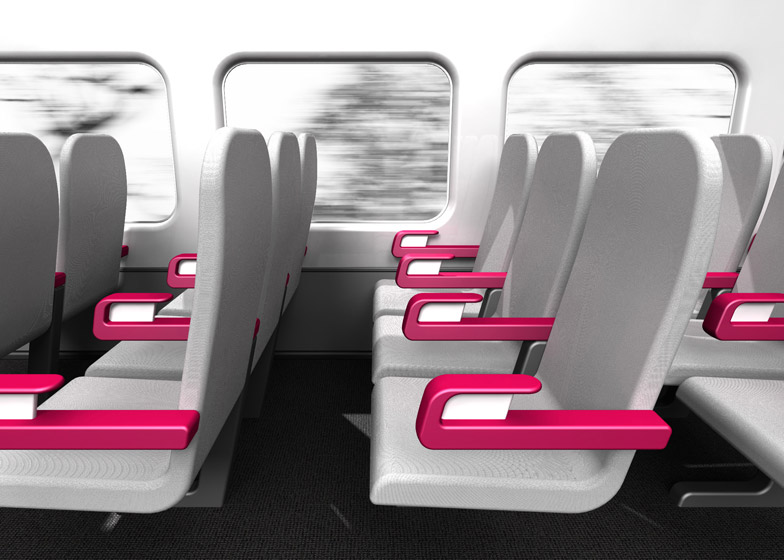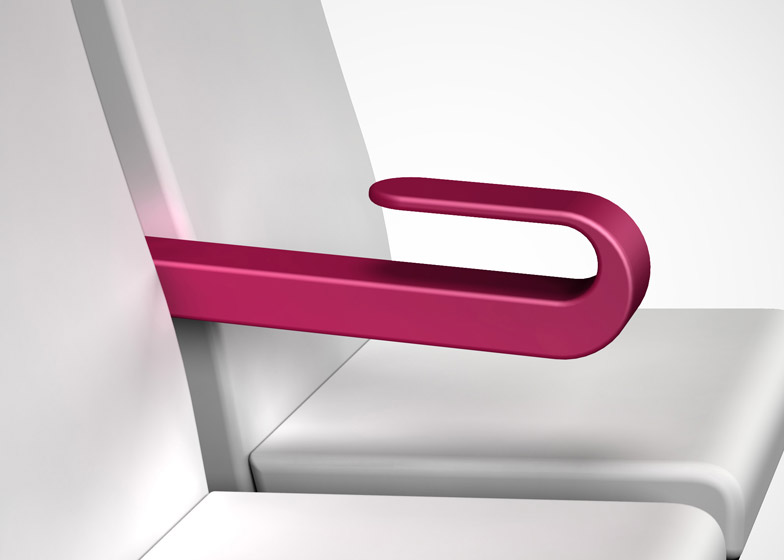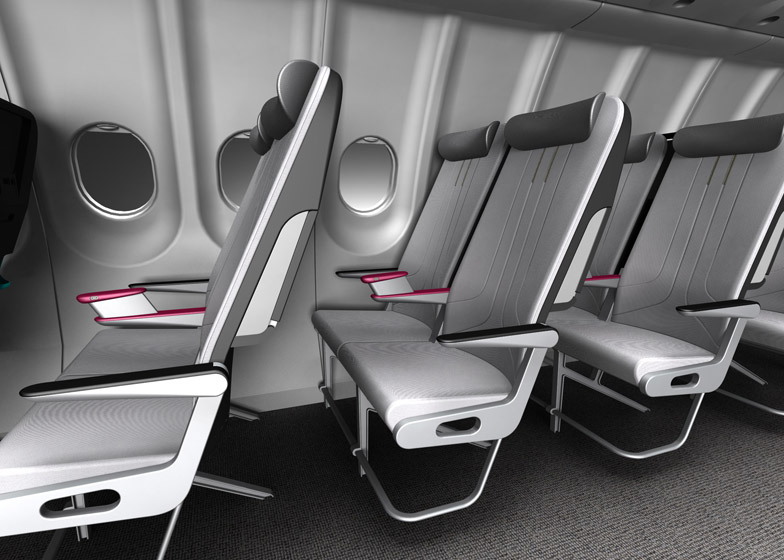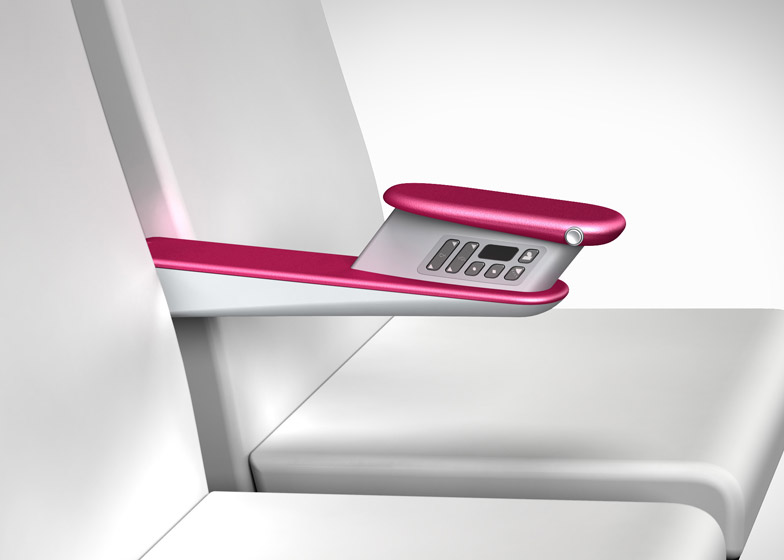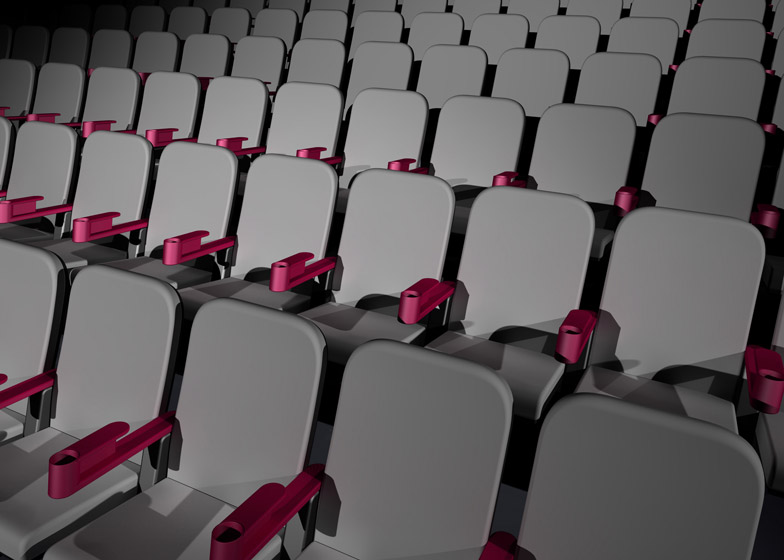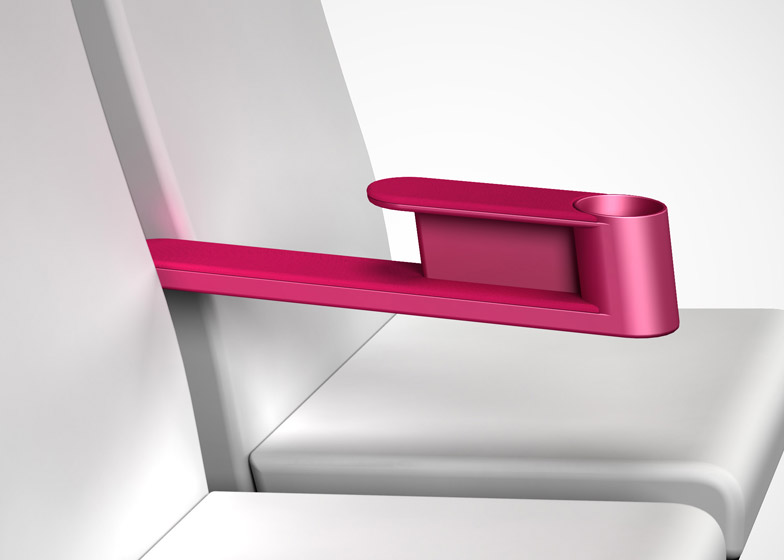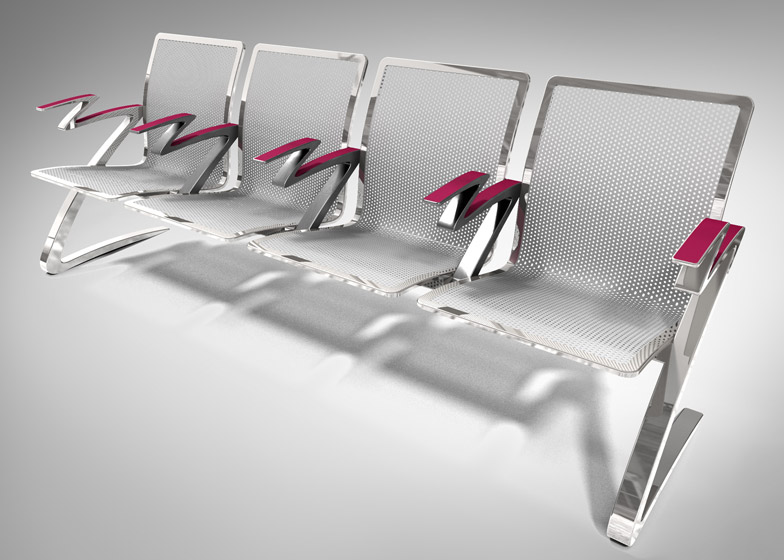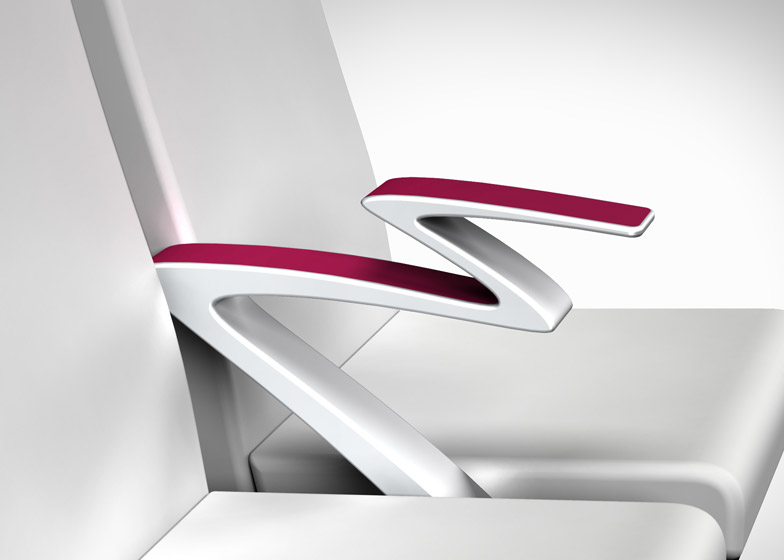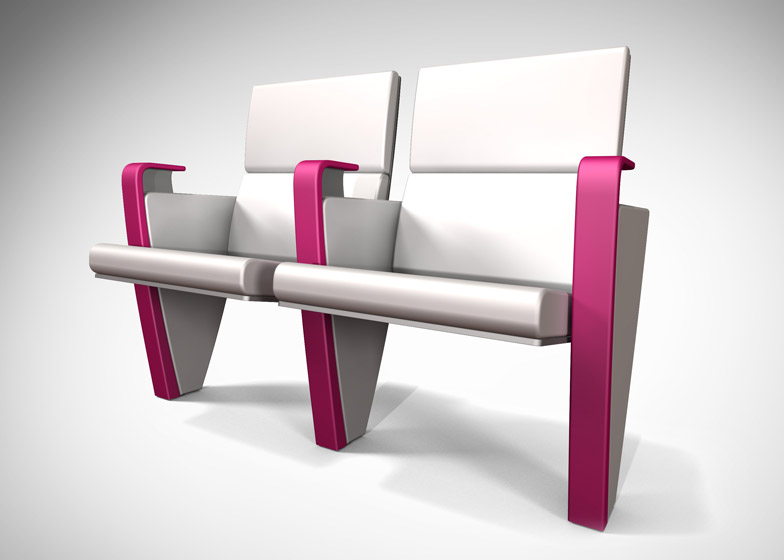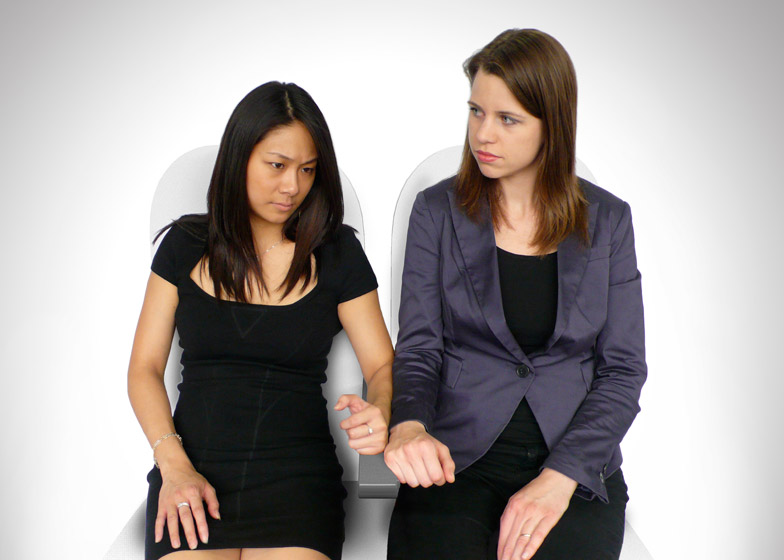Fights over the armrest in an airline cabin or auditorium could be eradicated with this two-tiered support by Hong Kong designer James Lee (+ slideshow).
James Lee's Paperclip Armrest folds back on itself to form a double level armrest, comfortably accommodating two limbs on a single element.
The design features two flat surfaces with a gap in between, so neighbouring passengers could offset their limbs and no longer have to bump elbows.
"The arms can easily adapt to either levels by rotating your shoulders," Lee told Dezeen. "So when you rotate your shoulder forward, your elbow naturally goes up as well."
Lee came up with the idea for the space-saving design after grappling for space in a crowded lecture theatre, which he quickly translated to an airplane setting.
"When I was at University in Boston I went to a lecture and it was a really crowded room so I was elbowing the person next to me," he described. "I've always been interested in aircraft seating, which has always been about stuffing people into small places more comfortably."
He originally devised the idea in 2006, then entered the concept for the Crystal Cabin Award in 2009.
Since then, several iterations of the dual-height design have been visualised to show how they could adapt to different seating styles.
"The basic concept is really simple, so it can look very different," he said. "It really depends on the styling of the whole seat, and the arms can be styled to match the rest of the design and the whole structure."
After developing the concept for potential use in planes, Lee has now returned to his original source of inspiration due to the red tape surrounding aviation design.
"I thought about aircraft initially, but I'm focussing on auditoriums now because the regulations for the aviation industry are really complex," Lee explained. "It's quite hard to get something new or with a different design concept used on a plane."
The project is currently at prototype stage and Lee is looking for manufacturers to begin production.

